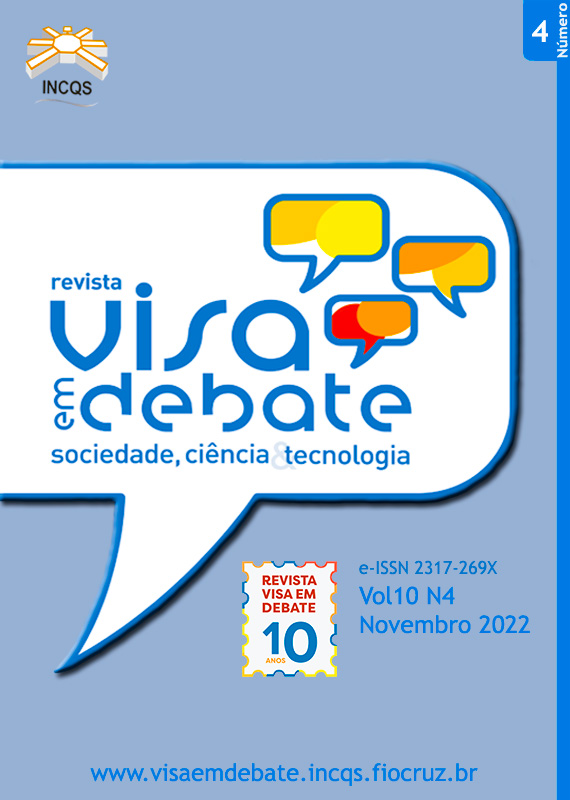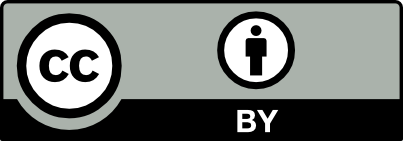The virus that stopped the world – an overview of the COVID-19 pandemic
DOI:
https://doi.org/10.22239/2317-269x.02114Keywords:
COVID-19, SARS-CoV2, Epidemiological ModelingAbstract
Introduction: The COVID-19 pandemic continues to impact the lives of millions of people, from the health, social and economic point of view, with strong impact on social security, youth and adult education, and other areas that, combined, directly impact the world economy. Objective: To present a review of some relevant works about the COVID-19 pandemic in order to demonstrate effective actions to face the pandemic and its impact on public health. Method: Bibliographic analysis of cross-sectional cohort studies that use official data on the number of cases, number of deaths, and doses applied according to age, dose, and type of vaccine supported by epidemiological models. Results: Despite the more than 460 million doses applied, we still have significant portions of the population without the complete vaccination schedule, with a real possibility of a new wave of COVID-19 by the end of the year 2022. Conclusions: SARS-CoV-2 continues to circulate strongly throughout Brazil and the world, increasing the possibility of new variants that would result in new waves of the pandemic, which can be avoided by measures implemented by the public authorities, such as the intensified vaccination campaigns, non-pharmaceutical measures and public information campaigns.
Downloads
References
COVID-19 Dashboard - by the Center for Systems Science and Engineering (CSSE) at Johns Hopkins University (JHU). https://gisanddata.maps.arcgis.com/apps/opsdashboard/index.html#/bda7594740fd40299423467b48e9ecf6. Consultado em 29 de Agosto de 2022.
Rahmandad H, Lim TY, Sterman J. Behavioral dynamics of COVID-19: estimating underreporting, multiple waves, and adherence fatigue across 92 nations. System Dynamics Review. 2021;37(1): 5–31 (2021). https://doi.org/10.1002/sdr.1673
Goulart AC. Um cenário mefistofélico: a gripe espanhola no Rio de Janeiro, 2003. mestrado em História Social, Universidade Federal Fluminense
Toledo Jr. ACC, História da varíola. Rev Med Minas Gerais. 2005;15(1):58-65
Aschwanden C. Why herd immunity for COVID is probably impossible. Nature. 2021; 591 (2021) 520-522. https://doi.org/10.1038/d41586-021-00728-2
https://coronavidas.net/pesquisas/
Rocha Filho TM, Mendes JFF, Murari TB, Nascimento Filho AS, Cordeiro AJA, Ramalho WM et al. WHO vaccination protocol can be improved to save more lives. research square, january 18. 2021. Preprint Available at https://www.researchsquare.com/article/rs-148826/v1 .
Mossong J, Hens M, Jit M, Beutels P, Auranen K, Mikolajczyk R, Massari M, et al. Social contacts and mixing patterns relevant to the spread of infectious diseases. PLoS Med. 2008;5(3); e74. https://doi.org/10.1371/journal.pmed.0050074
Rocha Filho TM, Moret MA, Chow CC, Phillips JC, Cordeiro AJA, Scorza FA et al. A data-driven model for COVID-19 pandemic - Evolution of the attack rate and prognosis for Brazil. Chaos, Solitons and Fractals. 2021;152: 111359. https://doi.org/10.1016/j.chaos.2021.111359
Zhou T, Liu Q, Yang Z, Liao J, Yang K, Bai W. Preliminary prediction of the basic reproduction number of the Wuhan novel coronavirus 2019-nCoV 2020;13:3–7. J Evid Based Med. 2020;13(1):3-7. https://doi.org/10.1111/jebm.12376
Verity R, Okell LC, Dorigatti I, Winskill P, Whittaker C, Imai N, et al. Estimates of the severity of coronavirus disease 2019: a model-based analysis. 2020;20(6):669-677. https://doi.org/10.1016/S1473-3099(20)30243-7
Linton NM, Kobaiashi T, Yang Y, Hayashi K, Akhmetzhanov AR, Jung S, et al. Incubation period and other epidemiological characteristics of 2019 novel coronavirus infections with right truncation: astatistical analysis of publicly available case data. J Clin Med 2020;9:538. https://doi.org/10.3390/jcm9020538
Lauer SA, Grantz KH, Bi Q, Forrest K, Zheng Q, Meredith HR, et al. The incubation period of coronavirus disease 2019 (COVID-19) from publicly reported con- firmed cases: estimation and application. Ann Intern Med 2020;172:577–582. https://doi.org/10.7326/M20-0504
Mizumoto K, Kagaya K, Zarebski A, Chowell G. Estimating the asymptomatic proportion of coronavirus disease 2019 (COVID-19) cases on board the diamond princess cruise ship, yokohama, japan, 2020. Euro Surveill. 2020;25(10):2000180. https://doi.org/10.2807/1560-7917.ES.2020.25.10.2000180
DATASUS. 2021. http://tabnet.datasus.gov.br/cgi/deftohtm.exe?popsvs/cnv/popbr.def . Accessed April, 28.
Ministério da Saúde, 2022. https://covid.saude.gov.br/
IBGE, 2022. https://www.ibge.gov.br/
Rocha Filho TM, Moret MA, Mendes JFF. A Transnational and Transregional Study of the Impact and Effectiveness of Social Distancing for COVID-19 Mitigation. Entropy. 2021;23: 1530. https://doi.org/10.3390/e23111530
GOOGLE. 2022. https://www.google.com/covid19/mobility/.
Ministério da Saúde, 2022. https://opendatasus.saude.gov.br/dataset/covid-19-vacinacao
Murari TB, Fonseca LMS, Pereira HBB, Nascimento Filho AS, Saba H, Scorza FA et al. Retrospective cohort study of COVID-19 in patients of the Brazilian public health system with SARS-COV-2 Omicron variant infection Vaccines in press 2022.
GOOGLE, 2022. https://trends.google.com/trends/?geo=BR
Murari TB, Nascimento Filho AS, Rocha Filho TM, Scorza CA, Scorza FA, Almeida ACG, Moret MA. RE: Evidences of reduction in SARS-C0V-2 transmission due to local measures and policies in early stages of the pandemic. Science (E-letter, 23 June 2020). https://science.sciencemag.org/content/368/6489/395/tab-e-letters.
Rocha Filho TM. O Conhecimento Científico como Instrumento Central na Tomada de Decisão na Administração Pública – Sobre a Pandemia de COVID-19 no Brasil. NAU Social 11 (2020) 185.
Richards F, Kodjamanova P, Chen X, Li N, Atanasov P, Bennetts L, et al. Economic Burden of COVID-19: A Systematic Review. Clinicoecon Outcomes Res. 2022; 14: 293-307. https://doi.org/10.2147/CEOR.S338225
Arora P, Rocha C, Kempf A, Nehlmeier I, Graichen L, Winkler MS, et al. The spike protein of SARS-CoV-2 variant A.30 is heavily mutated and evades vaccine-induced antibodies with high efficiency. Cellular & Molecular Immunology 2021;18(12):2673-2675. https://doi.org/10.1038/s41423-021-00779-5
Souza LF, Rocha Filho TM, Moret, MA. Relating SARS-CoV-2 variants using cellular automata imaging. Scientific Reports. 2022;12: 10297. https://doi.org/10.1038/s41598-022-14404-6
Downloads
Published
Issue
Section
License
Copyright (c) 2022 Marcelo Albano Moret Simões Gonçalves, Thiago Barros Murari, Magda de Lima Lúcio, Tarcisio Marciano da Rocha Filho (Autor)

This work is licensed under a Creative Commons Attribution 4.0 International License.
COPYRIGHT ALLOWANCE The author (s) hereinafter designated as the ASSIGNOR hereby assign and transfer, free of charge, the ownership of the copyrights related to this ARTICLE to the Vigilância Sanitária em Debate: Sociedade, Ciência & Tecnologia (Health Surveillance under Debate: Society, Science & Technology) – Visa em Debate, represented by FUNDAÇÃO OSWALDO CRUZ, established at Av. Brasil, nº 4365, Manguinhos, Rio de Janeiro, RJ, Brazil, CEP 21045-900, under the conditions set out below: (a) The terms and conditions set forth in this Agreement shall apply to the following: 1. The ASSIGNOR declares that they s(he) is (are) the author (s) and owner (s) of the copyrighted property of the ARTICLE submitted. 2. The ASSIGNOR declares that the ARTICLE does not infringe the copyrights and / or other property rights of third parties, that the disclosure of images (if any) has been authorized and that they s(he) assume(s) full moral and / or property liability for its content, before third parties. 3. THE ASSIGNOR assigns and transfers all copyrights relating to the ARTICLE to the ASSIGNEE, especially the rights of editing, publication, translation into another language and reproduction by any process or technique. The ASSIGNEE becomes the exclusive owner of the rights related to the ARTICLE, and any reproduction, totally or partially, is prohibited in any other means of publicity, printed or electronic, without prior written authorization from the ASSIGNEE. 4. The assignment is free and, therefore, there will be no remuneration for the use of the ARTICLE by the ASSIGNEE.







